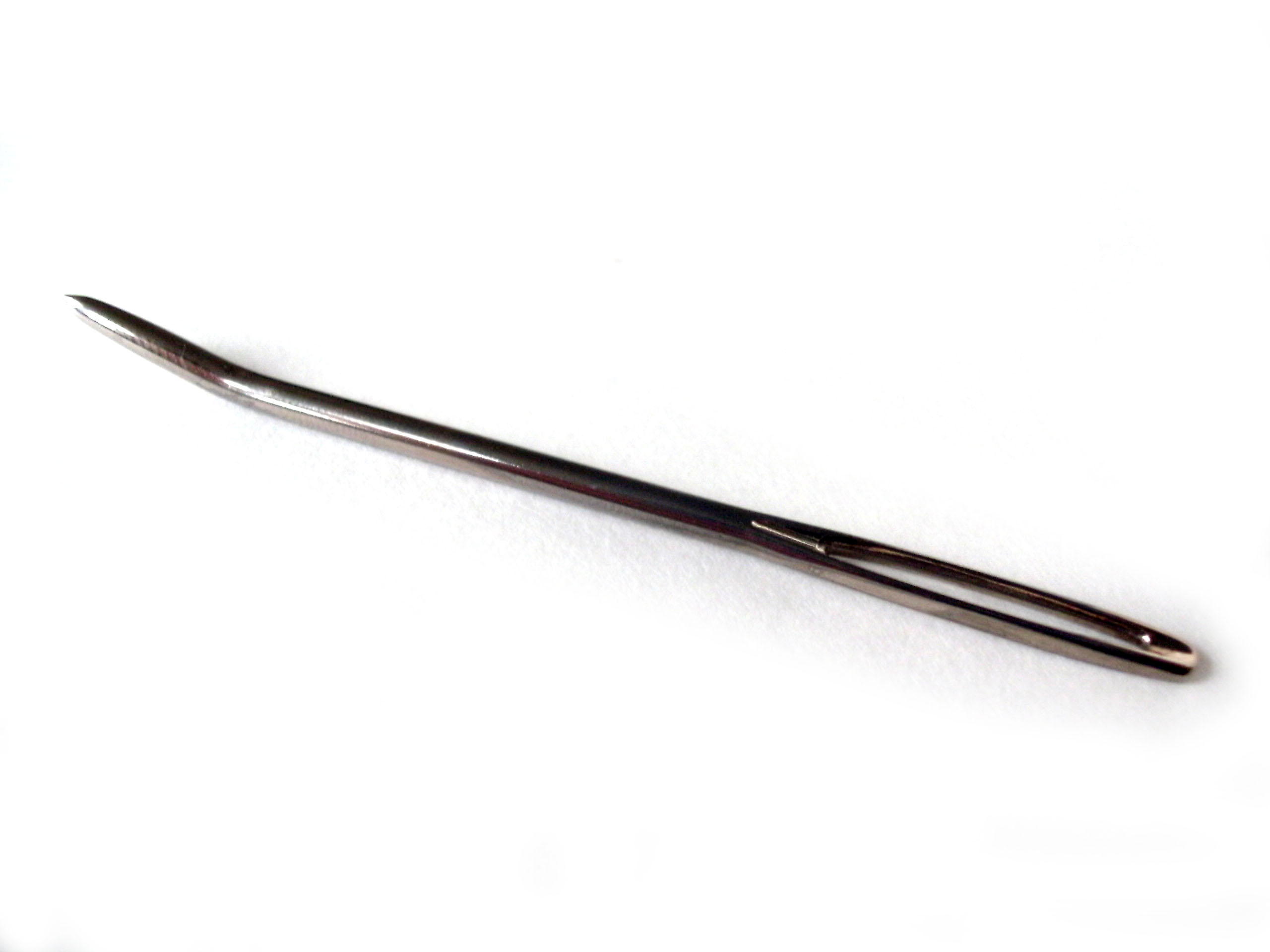Hand Sewing Needle
Hand Sewing Needle
A needle for hand sewing has a hole, called the eye, at the non-pointed end to carry thread or cord through the fabric after the pointed end pierces it. Hand sewing needles have different names depending on their purpose.
 |
| hand sewing needles |
Types of hand sewing needles
Hand sewing needles come in a variety of types/ classes designed according to their intended use and in a variety of sizes within each type.
- Sharp Needles: used for general hand sewing; built with a sharp point, a round eye, and are of medium length. Those with a double-eyes are able to carry two strands of thread while minimizing fabric friction.
- Applique: These are considered another all-purpose needle for sewing, appliqué, and patch work.
- Embroidery: Also known as crewel needles; identical to sharps but have a longer eye to enable easier threading of multiple embroidery threads and thicker yarns.

- Bet-weens or Quilting: These needles are shorter than sharps, with a small rounded eye and are used for making fine stitches on heavy fabrics such as in tailoring, quilt making and other detailed handwork; note that some manufacturers also distinguish between quilting needles and quilting between needles, the latter being slightly shorter and narrower than the former.

- Milliners: A class of needles generally longer than sharps, useful for basting and pleating, normally used in millinery work.

- Easy- or Self-threading: Also called calyx-eyed sharps, side threading, and spiral eye needles, these needles have an open slot into which a thread may easily be guided rather than the usual closed eye design.

- Beading: These needles are very fine, with a narrow eye to enable them to fit through the center of beads and sequins along with a long shaft to thread and hold a number of beads at a time.
- Bodkin: Also called ballpoints, this is a long, thick needle with a ballpoint end and a large, elongated eye. They can be flat or round and are generally used for threading elastic, ribbon or tape through casings and lace openings.

- Chenille: These are similar to tapestry needles but with large, long eyes and a very sharp point to penetrate closely woven fabrics. Useful for ribbon embroidery.

- Darning: Sometimes called finishing needles, these are designed with a blunt tip and large eye making them similar to tapestry needles but longer; yarn darners are the heaviest sub-variety.
- Doll: Not designed for hand sewing at all, these needles are made long and thin and are used for soft sculpturing on dolls, particularly facial details.

- Leather: Also known as glovers and as wedge needles, these have a triangular point designed to pierce leather without tearing it; often used on leather-like materials such as vinyl and plastic.

- Sail-maker: Similar to leather needles, but the triangular point extends further up the shaft; designed for sewing thick canvas or heavy leather.

- Tapestry: The large eye on these needles lets them to carry a heavier weight yarn than other needles, and their blunt tip—usually bent at a slight angle from the rest of the needle—allows them to pass through loosely woven fabric such as embroidery canvas or even-weave material without catching or tearing it; comes in a double-eyed version for use on a mounted frame and with two colors of thread.

- Tatting: These are built long with an even thickness for their entire length, including at the eye, to enable thread to be pulled through the double stitches used in tatting.
- Upholstery: These needles are heavy, long needles that may be straight or curved and are used for sewing heavy fabrics, upholstery work, tufting and for tying quilts; the curved variety is practical for difficult situations on furniture where a straight needle will not work Heavy duty 12" needles are used for repairing mattresses. Straight sizes: 3"-12" long, curved: 1.5"-6" long.
a small, slender, rod like instrument, usually of polished steel, with a sharp point at one end and an eye or hole for thread at the other, for passing thread through cloth to make stitches in sewing.







So nice Thank you.
ReplyDelete